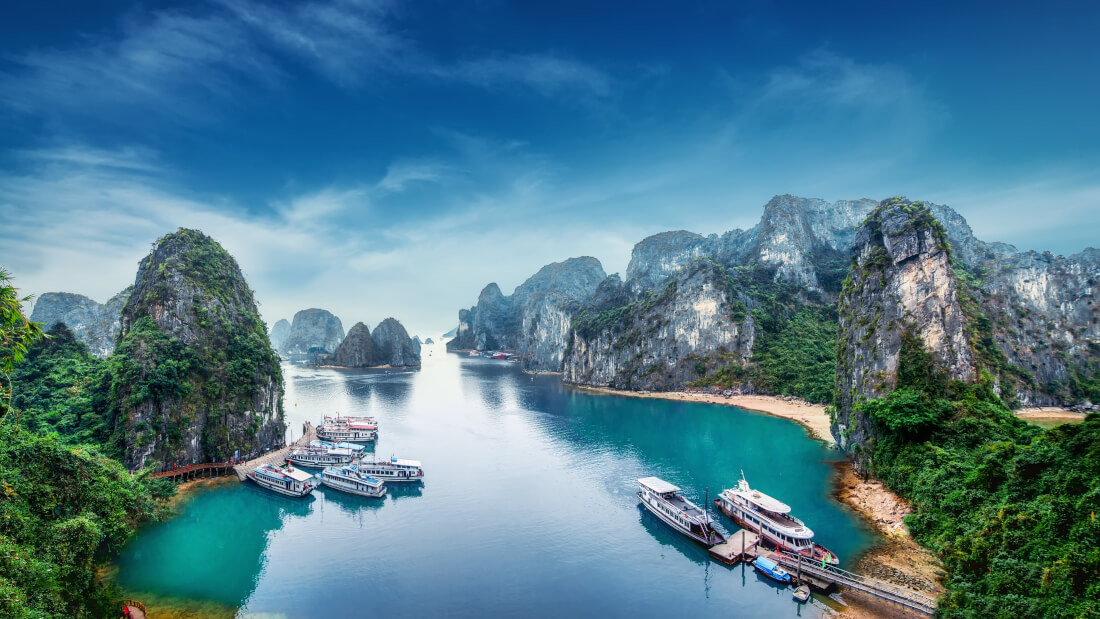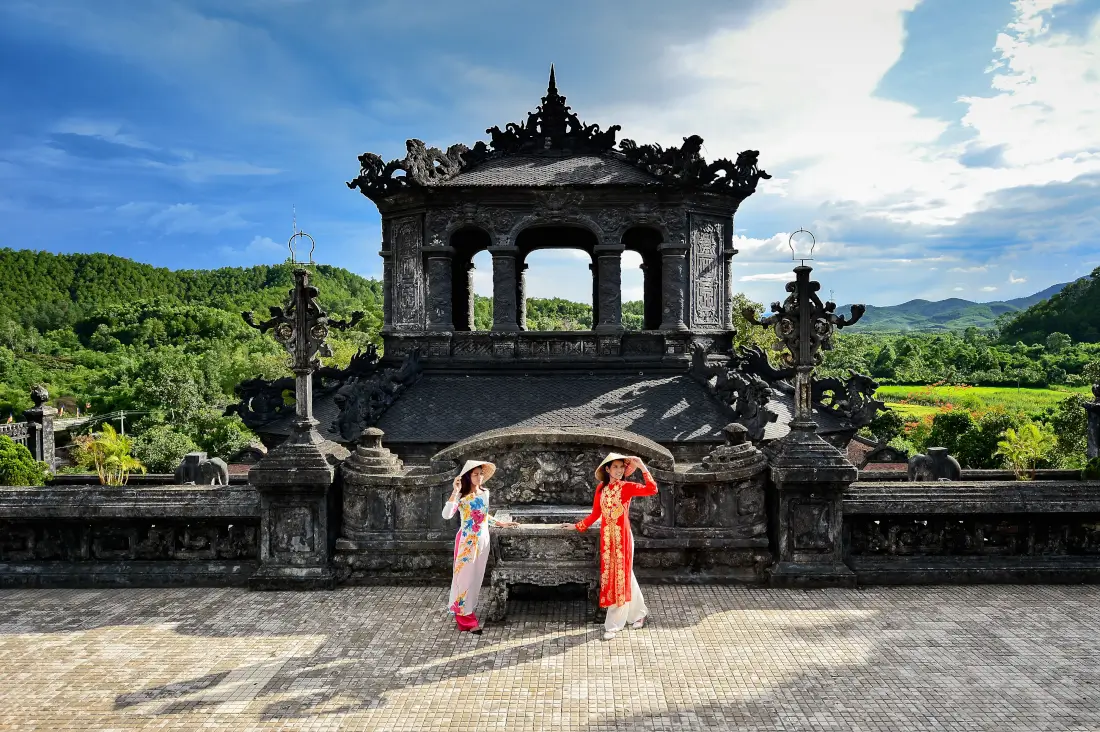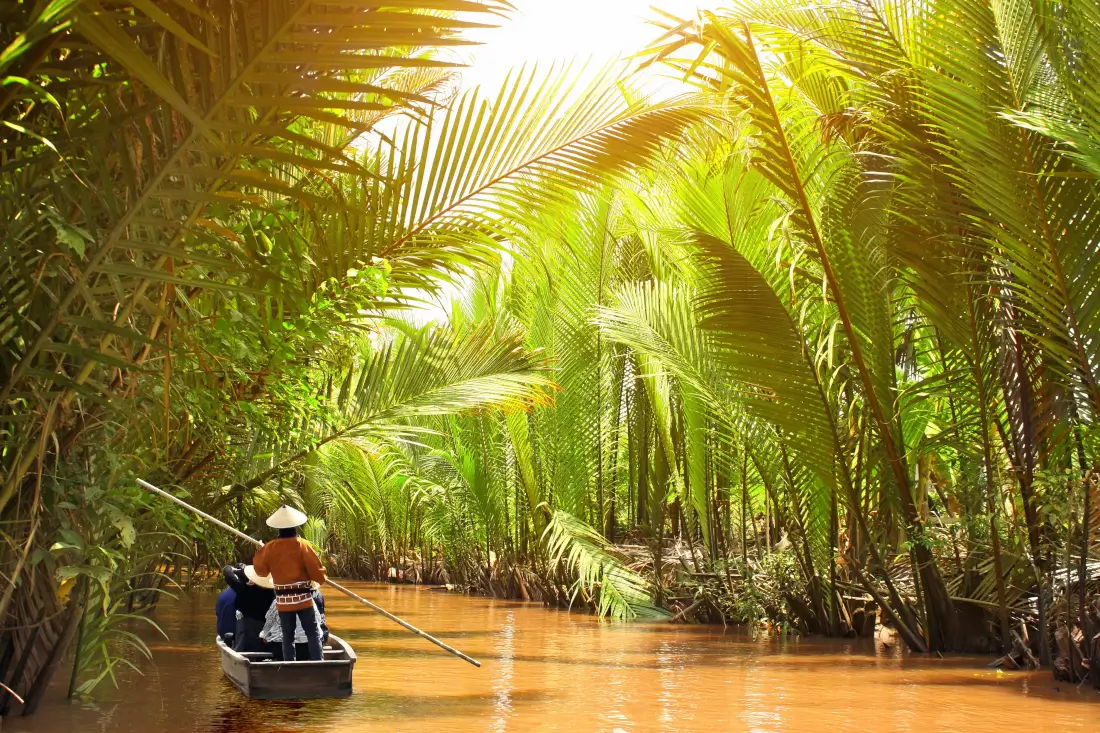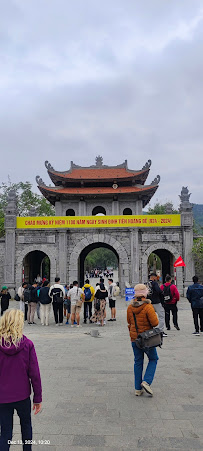Vietnam Temperature in January

In January, Northern Vietnam experiences winter, making it the coldest region in the country during this month. The Vietnam temperature in January here ranges between 10°C to 20°C (50°F to 68°F). In mountainous areas like Sapa, temperatures can dro...
Read more..
Central Vietnam has a more moderate winter. The Vietnam temperature in January here ranges from 18°C to 24°C (64°F to 75°F), with coastal areas like Da Nang and Hoi An being slightly warmer than inland regions like Hue.
Rainfall starts to ea...

Southern Vietnam enjoys its dry season in January, making it one of the best times to visit. The temperature in Vietnam in January averages between 25°C and 32°C (77°F to 90°F), with warm days and comfortable nights.
Rainfall is very rare, and ...
Frequently Asked Questions (FAQs)
January is a perfect time to stay in Vietnam when you enjoy cooler, drier weather. In the North, mild winters are suitable for visiting Hanoi and Ha Long Bay, whereas in Central Vietnam, cities such as Hue and Hoi An enjoy pleasant weather with lighter crowds. Down south, Ho Chi Minh City enjoys warm-to-sunny days, good enough for a solid day out at the beach. The Vietnam temperature in January varies from 10°C (50°F) in the north to around 28°C (82°F) in the south, offering diverse experiences across the country. It’s also a good time to catch cultural events and festivals.
Vietnam in January offers a wide range of temperatures depending on the region. In the north, including Hanoi and Sapa, temperatures can be quite cool, ranging from 10°C to 18°C (50°F to 64°F), sometimes even colder in the mountains. Central Vietnam, comprising Hue and Da Nang, experiences mild weather around 18°C to 24°C (64°F to 75°F). Down South, including Ho Chi Minh City and the Mekong Delta, it is warm and tropical, averaging around 25°C to 30°C (77°F to 86°F). January is definitely one of the most pleasant months to go through the varied climates and landscapes of Vietnam.
Vietnam weather in January varies by region, but overall, it is one of the drier months in many parts of the country. Northern Vietnam, including Hanoi, tends to be cool and misty, with light rain or drizzle. Central regions like Hue and Da Nang may still experience some rain, although it starts to decrease compared to previous months. Southern Vietnam, including Ho Chi Minh City, enjoys dry and sunny weather, ideal for beach trips. While rain is possible, it’s generally not heavy or frequent. Vietnam weather in January makes it a good time for travel, especially in the south and north.
Travellers may expect the nicest weather in southern Vietnam in January. Warm temperatures, bright skies, and little precipitation are features of cities like Ho Chi Minh City, Phu Quoc, and the Mekong Delta. The weather is perfect for beach visits, sightseeing, and learning about the local way of life during this dry season. On the other hand, central Vietnam can still have some residual rain, while northern Vietnam can be cold and foggy. The south is the best place to go if you want sunshine and pleasant weather. All things considered, January is a fantastic month to travel to southern Vietnam if you're looking for warmth, outdoor activities, and consistent weather.
Yes, you can definitely visit beaches in Vietnam in January, especially in the southern part of the country. Warm temperatures, bright skies, and placid seas make well-known locations like Phu Quoc, Nha Trang, and Mui Ne ideal for swimming, tanning, and water sports. Although there may still be some rain around the central coast, which includes Da Nang and Hoi An, things start to get better. Beaches in the north are typically colder and less suitable for beach activities. All things considered, the southern beaches provide the best circumstances if you want to enjoy the shore during your January trip to Vietnam.
Travellers can engage in a variety of thrilling activities in Vietnam in January. Explore Hanoi's Old Quarter or go on a picturesque cruise across Halong Bay in the north, where the chilly weather lends a magical touch. Central Vietnam, particularly Hue and Hoi An, is wonderful for cultural sightseeing once the rains begin to ease. The warm weather in southern Vietnam is ideal for touring the Mekong Delta or lounging on Phu Quoc beaches. Hiking in the hills of Da Lat or Sapa is also fantastic in January. It's the perfect month for exploration and adventure because of the nice weather and reduced people.
In Vietnam in January, dressing smart means adapting to three distinct regions. In the north, layer up with sweaters or fleeces, a warm jacket, and long pants, as the mornings and nights can feel quite chilly, especially in spots like Hanoi or Sapa. In central areas such as Da Nang or Hue, daytime temperatures hover around 20 to 25°C, you can opt for light long‑sleeve shirts and a jacket for evenings. The south remains warm and dry, so pack breathable cotton T‑shirts, shorts or dresses, and sun protection items like hats and sunglasses. A compact rain layer and modest attire for temples are always useful.
January is often a budget-friendly month for travelling. Demand for flights and accommodations typically drops after the Christmas season, causing prices to go down. Consequently, many destinations, particularly those in colder climates or popular summer destinations, offer off-season rates. This season is when the traveller would want to enjoy discounted airfare, hotel deals, and less crowded scenes. Though prices vary with location, as some winter spots, like ski resorts, might still be costly. All in all, it is a great period in January for any cost-conscious travellers looking for value and an unplugged experience. Early booking and some flexibility in the dates of travel can only help maximise the savings during this budget-friendly month.
In January, you can visit Ha Long Bay for the unique experience. January falls in the dry season, meaning very little rainfall, making it perfect for cruising and sightseeing. It's cooler, with temperatures ranging between 14°C and 20°C, and there may be misty mornings creating a magical atmosphere over the limestone islands. Swimming, meanwhile, might be less appealing due to the cooler water, but the views make for a worthy experience anyway. The temperature in Vietnam varies by region, and in northern areas like Ha Long Bay, January brings crisp, refreshing air perfect for peaceful exploration without the crowds.
For trekkers who prefer cool, crisp weather and fewer people, January may be a wonderful month to visit Sapa. Temperatures range from 5°C to 15°C, and the terrain is atmospheric and hazy. The serene surroundings and calm paths have a distinct charm, even though the rice terraces are not as verdant as they are at other seasons. But be ready for chilly evenings and the chance of precipitation or light frost. Warm clothes and the right equipment are crucial. January offers a calm and uncrowded hiking experience in one of Vietnam's most picturesque mountain regions, if you don't mind the cold.
January is generally not too crowded for popular attractions in Vietnam, making it a pleasant time to visit. International tourism is moderate after the New Year holidays, and domestic travel remains low until the Tet Festival, which usually occurs in late January or early February. This means you can explore famous sites like Ha Long Bay, Hoi An, and Hue with fewer crowds. Vietnam weather in January varies by region; it is cool and misty in the north and dry and warm in the south, providing comfortable conditions for sightseeing. Overall, January offers a peaceful travel experience with beautiful landscapes and cultural charm.
Small islands in the south of Vietnam are an excellent option to explore in January, mainly because January tends to be the dry season there, with lots of clear sunshine and warmth. Phu Quoc is an obvious consideration given its sandy beaches, clear waters, and vibrant night markets. Alternatively, the Con Dao Islands are known for their untouched nature and peaceful atmosphere, making them another excellent option. Both destinations enjoy ideal beach conditions thanks to favourable Vietnam weather in January. While northern islands such as Cat Ba may have a bit cooler and misty-like weather, southern ones hold the best temps for swimming, snorkelling, and lazing around. Calm waters and balmy temperatures make island-hopping in southern Vietnam a serene experience in January.
















